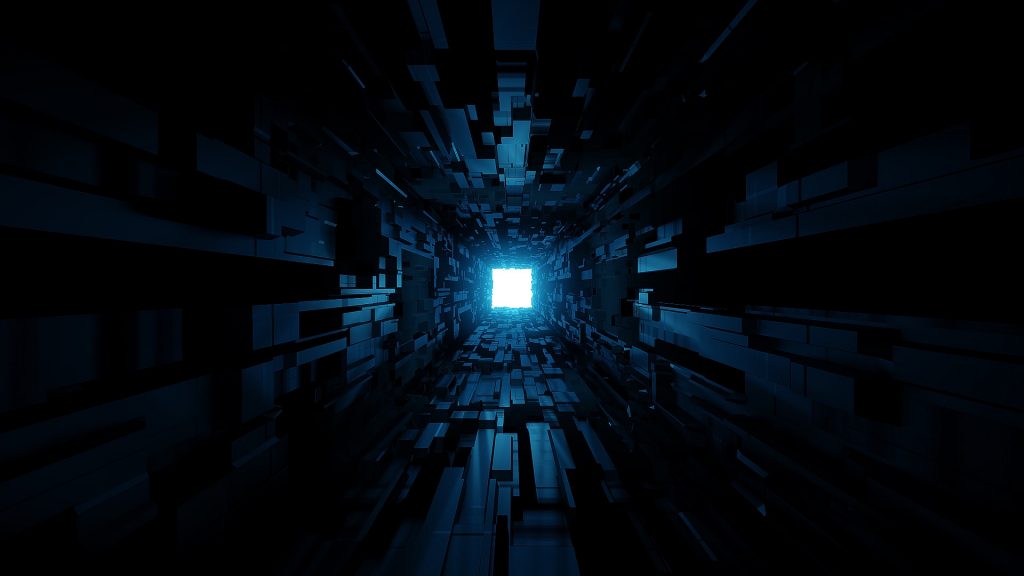Wormholes are a theoretical phenomenon that have fascinated scientists and science fiction writers for decades. These hypothetical structures are thought to be shortcuts through space-time, potentially enabling faster-than-light travel and unlocking the mysteries of the universe. One of the most famous examples of a wormhole is the 2001 Wormhole, named after its appearance in the iconic sci-fi film “2001: A Space Odyssey.” The 2001 Wormhole was a significant discovery in the field of astrophysics, providing new insights into the properties of space-time and the potential for interstellar travel.
In this article, we will explore the science of wormholes and what the 2001 Wormhole can teach us about space-time. We will delve into the implications of wormholes for space travel and exploration, as well as the challenges associated with creating and maintaining stable wormholes. By examining current theories and hypotheses related to wormholes, we will gain a better understanding of these fascinating phenomena and their potential for unlocking the mysteries of the universe.
Unveiling the Mysteries of Space-Time
Wormholes are a theoretical construct that involves a connection between two points in space-time that creates a shortcut or tunnel through the fabric of space-time. They are postulated to be a phenomenon that emerges from Einstein’s theory of general relativity.
In terms of their properties, wormholes are thought to have two mouths, one on either end of the tunnel, and may be either static or dynamic. Static wormholes are considered to be stable and remain open over long periods of time, while dynamic wormholes are unstable and may close or collapse quickly.
Wormholes are often compared to black holes, as they both involve the warping of space-time. However, while black holes are characterized by a one-way event horizon from which no matter or information can escape, wormholes are thought to allow for matter and information to travel between the two mouths.
In contrast to other space-time phenomena such as singularities or cosmic strings, wormholes are thought to be traversable, meaning that it is possible for objects to pass through them. However, the challenges associated with creating and maintaining a stable wormhole, as well as the potential dangers of traversing one, make them a topic of ongoing study and debate in the field of astrophysics.
Unpacking the Reality of the 2001 Wormhole
The 2001 Wormhole, also known as the Einstein-Rosen Bridge, was not actually discovered in 2001, but rather the concept was popularized by the iconic sci-fi film “2001: A Space Odyssey.” However, the concept of wormholes and the properties associated with them have been studied by astrophysicists for decades.
The 2001 Wormhole concept involves a tunnel through space-time that could potentially allow for faster-than-light travel and interstellar exploration. While the 2001 Wormhole is purely theoretical, the concept is rooted in Einstein’s theory of general relativity, which suggests that such a phenomenon is possible.
The significance of the 2001 Wormhole discovery lies in the potential insights it provides into the properties of space-time and the nature of the universe. By exploring the concept of wormholes and their implications for space travel and exploration, scientists can gain a better understanding of the fabric of the universe and potentially unlock new technologies for space exploration. While the challenges associated with creating and maintaining a stable wormhole are significant, the ongoing study of wormholes provides exciting possibilities for the future of space exploration.
Exploring the Possibilities of Interstellar Travel
Space-time is a fundamental concept in the field of astrophysics that refers to the interconnected fabric of space and time that makes up the universe. According to Einstein’s theory of general relativity, the presence of mass or energy warps the fabric of space-time, causing gravitational forces that affect the motion of objects within it.
Wormholes are thought to emerge from the warping of space-time caused by the presence of matter or energy. In this context, a wormhole is a theoretical construct that creates a shortcut or tunnel through the fabric of space-time. The two ends of the tunnel, known as the “mouths” of the wormhole, are thought to be connected by a narrow neck that passes through another dimension of space-time.
The warping of space-time caused by wormholes could potentially allow for faster-than-light travel and exploration of distant parts of the universe. However, the challenges associated with creating and maintaining a stable wormhole, as well as the potential dangers of traversing one, make them a topic of ongoing study and debate in the field of astrophysics.
The Potential of Wormholes for Space Exploration
Wormholes have significant implications for space travel and exploration, potentially offering a shortcut through the vast distances of space. If stable wormholes could be created and controlled, they could allow for faster-than-light travel, enabling humanity to reach distant parts of the universe more quickly than ever before.
The potential benefits of wormholes for space exploration are immense. They could make interstellar travel a possibility and provide a way to explore distant parts of the cosmos that would otherwise be unreachable. They could also open up new possibilities for scientific research, allowing astronomers to study phenomena that are currently beyond our reach.
However, the challenges associated with wormholes are significant. Creating and maintaining stable wormholes would require immense amounts of energy and technological innovation, and traversing a wormhole could potentially be dangerous or even lethal.
Despite these challenges, the study of wormholes continues to be an active area of research in the field of astrophysics, with the potential for new discoveries that could revolutionize our understanding of the universe.
Navigating the Challenges of Interstellar Transport
While wormholes offer a tantalizing possibility for interstellar travel, they come with significant challenges and risks. One of the biggest challenges is creating and maintaining stable wormholes, which would require immense amounts of energy and technological innovation. In addition, the complexities of the laws of physics make it difficult to predict the behavior of a wormhole or what might happen during transit.
There are also potential dangers associated with wormhole travel, including the possibility of getting trapped inside the wormhole or encountering unknown and potentially lethal phenomena on the other side. Theoretical physicists have also raised concerns about the possibility of creating paradoxes or altering the fabric of the universe in unpredictable ways.
Given these challenges, scientists continue to study the feasibility and potential risks associated with wormholes. While they offer exciting possibilities for interstellar travel, the challenges must be carefully considered and addressed before wormhole travel can become a reality.
Theories and Hypotheses of Wormhole Astrophysics
Wormholes are still largely theoretical, but scientists have proposed several hypotheses regarding their properties and behavior. One theory suggests that wormholes could be created by manipulating the fabric of space-time through the use of exotic matter or negative energy. Another theory suggests that wormholes could exist naturally, formed by the gravitational forces of massive objects.
Some scientists have also proposed the existence of “traversable” wormholes that could potentially be used for interstellar travel. However, this remains a topic of debate and further research is needed to explore the feasibility of such travel.
As research in the field of wormhole astrophysics continues, there is great potential for new discoveries and insights into the nature of the universe. Scientists are exploring new ways to detect and study wormholes, as well as developing new theoretical frameworks to explain their behavior. With continued exploration and experimentation, we may one day unlock the secrets of these mysterious phenomena and uncover new possibilities for space travel and exploration.





